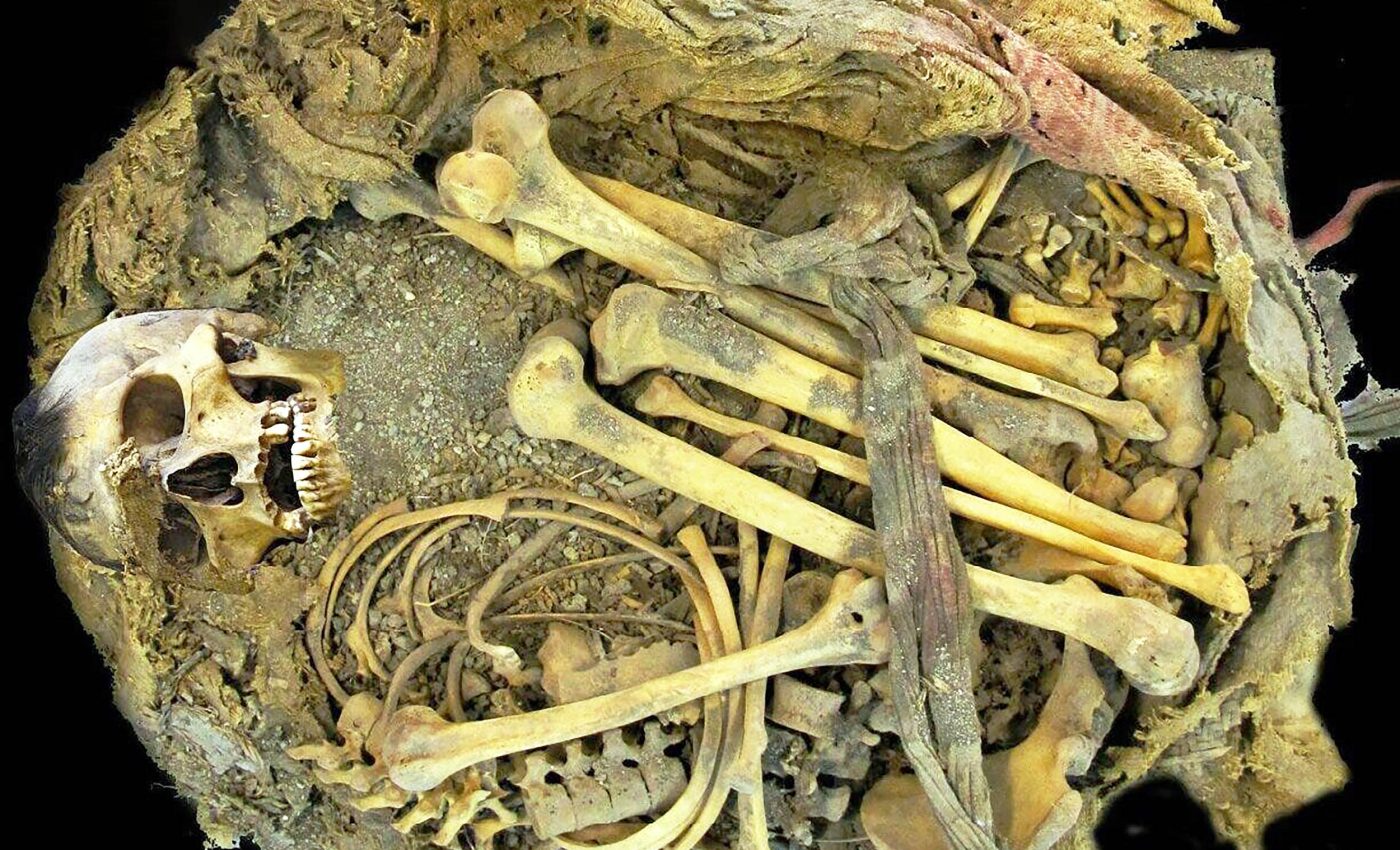
Intact intestines found in 1,000-year-old skeleton reveal surprisingly healthy ancient diet
Every civilization leaves something behind. Pottery, bones, tools – but this time, the story came from within. Hidden inside a man who lived a thousand years ago in Zimapán, Mexico, scientists found traces of ancient gut bacteria.
Evidence of these gut microbes survived long after his world vanished. They carry clues about how people once lived, ate, and stayed healthy before modern life began reshaping the human body from within.
The man from Zimapán
Researchers from Universidad Nacional Autónoma de México studied the remains of a young adult male found in a rock shelter in Zimapán.
His body was naturally preserved, and his intestines and feces stayed intact – rare gifts for science. Using high-throughput 16S rRNA gene sequencing, the team identified what kinds of gut bacteria once lived inside him.
The researchers discovered bacterial families still found in modern guts: Peptostreptococcaceae, Clostridiaceae, Enterobacteriaceae, and Enterococcaceae.
Microbes from these groups help digest food and maintain gut balance. Yet, the proportions in the ancient man’s gut were unlike anything seen today.
Some microbes were abundant, while others were missing entirely. His gut reflected a life before antibiotics, processed food, and industrialization.
Life and diet revealed
The man likely lived as a seasonal hunter-gatherer from the Otopame culture. His surroundings were dry, his diet wild. No sugar, no preservatives – just plants, roots, and insects.
The researchers found high levels of Clostridium, bacteria that break down fiber and create short-chain fatty acids that are vital for gut health.
That told scientists the man’s diet was rich in natural plant material. He probably ate agaves, mesquites, and prickly pears that grew nearby.
Other gut microbes gave away more clues. Some could digest chitin, a substance found in insect shells. This means insects were not just pests – they were food.
Even today, some people in Hidalgo still eat edible insects, a tradition stretching back hundreds of generations.
Gut bacteria in Zimapán man
One discovery surprised the scientists. They found Romboutsia hominis, a bacterium previously seen only in modern humans.
Its appearance in the ancient gut hinted at continuity across centuries. Some gut microbes have clearly survived through every shift in human history – from nomadic life to cities filled with antibiotics and fast food.
But not everything endured. Families like Bacteroidaceae and Bifidobacteriaceae were scarce, while others, such as Prevotellaceae, were missing.
Modern humans depend on these bacteria for digestion, but they may have evolved differently. The absence could reflect a diet with fewer carbohydrates and more wild plants and proteins.

Zimapán man’s gut microbes
The scientists compared the Zimapán samples to those from modern populations and ancient mummies from the Andes.
The results placed the Zimapán man’s microbiome somewhere between both worlds. His gut was more like that of ancient Andean people than today’s city dwellers.
Modern urban microbiomes show less diversity. Processed food, medicine, and hygiene have simplified our inner ecosystems.
The Zimapán man’s microbiome looked raw, diverse, and untamed – a reflection of a lifestyle that was closer to nature.
Science behind the discovery
The study took extreme precautions to avoid contamination. Scientists worked in sterile rooms under ultraviolet light. DNA was extracted in small batches and analyzed in two separate labs.
Each bacterial sequence was matched against global databases. Most of the DNA, however, didn’t match any known environment.
Over 90 percent of the microbes couldn’t be traced. Those could belong to lineages that have disappeared over time.
This discovery suggests modern humans have lost more than diet diversity. We might have lost entire bacterial species that once played key roles in our health and metabolism.

Wrapped in culture and care
The Zimapán man’s story isn’t just biological – it’s cultural. The burial itself shows care and symbolism.
“Zimapán man’s remains were neatly wrapped like a bundle, which can be interpreted as indicating that [he was] an important figure within the community,” the authors wrote.
The outer covering of the bundle consisted of a mat, woven from long maguey fibers, to form a sturdy yet flexible rectangle.
Under this mat lay a finely crafted sheet made of native brown cotton, on which the Zimapán man was placed.
“Studying the mathematical composition of the knots within the fabric, we concluded that it was a peculiar and complex arrangement to carry out,” stated the authors.
Zimapán science and history
This research didn’t just decode DNA. It bridged science and culture. Archaeology met microbiology, showing how the tiniest organisms can reveal human history.
The integration of these fields offers a living record of adaptation. The Zimapán man’s gut microbes show what humans looked like on the inside before industrial life changed us.
By studying ancient microbes, scientists can map how our inner ecosystems evolved alongside civilization.
The work also reminds us that our health depends on that old partnership between humans and bacteria – a relationship shaped over thousands of years.
Lessons learned from Zimapán man
The Zimapán man’s microbiome is more than scientific data. It’s a time capsule of human biology. His gut bacteria tell a story of resilience and coexistence with nature.
Modern humans may live longer, but our microbial diversity has thinned. In losing those bacteria, we may have lost some of our adaptability too.
The man from Zimapán still speaks, not through words, but through the microscopic life that survived within him.
His gut preserves a version of humanity untouched by modern life – one that still shows how deeply humans are connected to the unseen world inside them.
The study is published in the journal PLOS One.
Image Credit: Rene Cerritos Flores, CC-BY 4.0 (https://creativecommons.org/licenses/by/4.0/)
—–
Like what you read? Subscribe to our newsletter for engaging articles, exclusive content, and the latest updates.
Check us out on EarthSnap, a free app brought to you by Eric Ralls and Earth.com.
—–













